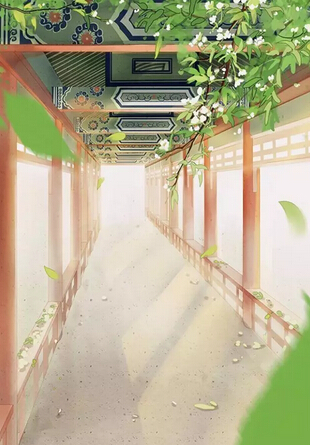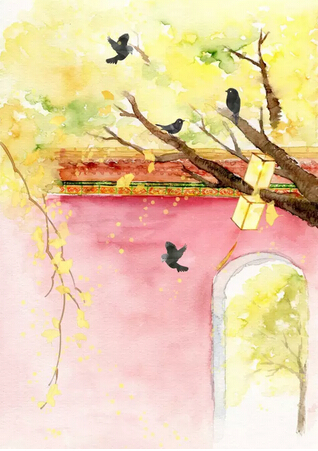How much can a cup of tea hold?
No more than the size of a tea bowl.
Amidst firewood, rice, oil, salt, sauce, vinegar, and tea, it is life.
Amidst music, chess, calligraphy, painting, poetry, wine, and tea, it is elegance.
But sometimes, it is simply a painting within the mundane world.

The essence of plants, recognizing tea by its fragrance, is a fine brush painting.
Drinking tea has always been a leisurely affair, like the delicate strokes of a fine brush, outlining the most graceful lines of a leaf.
Those who are constantly busy cannot bear to drink tea. The value of tea has never been about being lofty. It does not demand wealth, but it does require leisure. It does not ask one to become a tea master or to study tea rituals, but simply to witness its youthful bloom in a once-in-a-lifetime moment of sincerity. So, if one is truly too busy to spare a moment, how can they bear to miss the ever-changing flavors of tea with each brew?

A good cup of tea requires someone with both leisure and heart to perfect it. Tea's youthful years are entirely entrusted to the hands of the tea lover. From sprouting to picking, fermenting, roasting, and packaging, tea traverses countless mountains and rivers to quietly appear before the tea lover. If one truly loves tea, they cannot bear to treat the tea ceremony casually. The careful arrangement of lighting, incense burners, vases, tea pets... all these meticulous details cannot be achieved on a whim. The thoughtful days and nights spent preparing are the greatest respect for tea.
Tea never demands that those who understand it be masters. For tea, the best people in the world are those with heart. Tea's secrets are never missed by those who care.

Sweet and bitter, joy and sorrow intertwined, it is an ink-wash painting.
Tea is serious, but not rigid. If one pays even closer attention, the tea in their eyes becomes an ink-wash painting, not confined to form but understood by heart.
Many people, when first encountering tea, think it has only one undifferentiated taste—bitterness. In youth, what is so good about tea? At that time, tea seems to wear only a weathered and stern face, devoid of allure.

Later, one finally learns how to love tea. It is because the experiences of a well-traveled life gradually dull and refine the tongue. Only then does one realize that among the myriad flavors of the world, none can compare to the lingering aftertaste of deep memories. At that moment, tea acquires other flavors. Years of memories emerge with each sip. In a single cup, it feels as though half a lifetime has passed. The sweetness after bitterness is the heartbeat of wholehearted effort, rewarded with joy. After countless twists and turns, all that remains is the fresh and wonderful fragrance of that cup of tea.
On the afternoon of September 1, 1942, before his passing, Master Hongyi left only four words on a piece of paper: "Joy and sorrow intertwined." A lifetime of brilliance ultimately returned to the compassionate silence of Buddhism. Apart from tea, which blends sweet and bitter flavors into one, what else can better summarize the world through taste? Tea's freehand brushwork, within its small frame, leaves only calm and detachment. If all beings suffer, tea shares your bitterness. If the heart holds sweetness, tea never hides the lingering sweetness in the throat.

Accepting fate with peace, facing life with calm, it is the painting of life.
The ups and downs of life are like tea brewed in boiling water. The tea liquor, like a mirror, reflects the years with quiet depth, its flavor lasting yet its surface undisturbed.
For a long time, "accepting fate with peace" was misinterpreted as "going with the flow." But to accept fate with peace is simply to face things with calm. With peace, there is no complaint. With calm, there is no doubt. Tea is a noble spirit with dignity. No matter how its fortunes rise and fall, it never loses its fragrance. It does not flatter, so it retains the bitterness from its leaves. It does not demean itself, so it preserves the sweetness that lingers after.

Neither servile nor overbearing, it is the best appearance in life's scenery. Because of its calmness, it does not fail to see the blossoms of spring due to unrecognized talent, nor does it miss the whispers of swallows because of life's hardships. The vitality and greenery accumulated throughout tea's life can finally flow quietly and endlessly in the painting of life.
Those who love tea are always beautiful. And what kind of painting lies in your cup of tea?